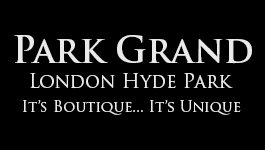Wherever you stay when visiting Central London – whether it be accommodation Paddington or anywhere else – there are few areas of the locality that stir the imagination quite like the electric, vibrant, sometimes stylish and glamorous, other times cheeky and rather naughty, small district that’s Soho. Especially as the place has a distinct association with the glorious music, fabulous fashions and stone-cold cool icons of the ‘Swinging Sixties’. And, with that in mind, here’s some things about 1960s’ Soho you may not be aware of…

Groovy Carnaby Street was the birthplace of mod fashion
The credit for Soho’s not insignificant boast to be the birthplace of mod fashion goes to a ground-breaking fashion designer named John Stephen. Having originally hailed from down-at-heel Glasgow, Stephen had no problem with mixing things up, which is exactly what he did when opened a shop on the legendary Carnaby Street, which was soon vending awesomely stylish and elegant men’s tailoring to London’s predominantly working-class beat-music-devouring young gents – and so the mod fashion look was born.
The Rolling Stones first performed live and Jimi Hendrix recorded his first album here
Famous for its West End locations (first on Oxford Street, then Wardour Street in Soho and then Charing Cross Road), the Marquee Club – which started out as a live jazz venue in the ’50s – played host to a welter of great and later-to-be-famous rock names in the ’60s, including The Who, Eric Clapton and The Yardbirds, but on 12th July 1962 it was where The Rolling Stones played their first paying live performance. Later (just four-and-a-bit years later, to be more precise), Soho was the West End district where Jimi Hendrix and his ‘Experience’ bandmates descended on to record their seminal Are You Experienced? album – specifically it was at the CBS Hit Factory studios at 31 Whitfield Street.
‘Beatlemania’ was coined following a Fabs Soho gig
As a term to express the extraordinary, obsessive popularity of The Beatles throughout the 1960s (and especially at their live-performing peak in the middle of the decade), ‘Beatlemania’ feels like a term that seems to have just been born, come into existence on an irresistible-Fabs-melody-backed cloud given it’s simple perfection. But it was created by mere man – and by one man in particular; a Daily Mirror journalist whom came up with it to describe the rapturous reception the Scouse-scallywags-but-soon-to-be-world-conquering-rock-superstars received at a gig on 13th October 1963, held at Soho’s iconic London Palladium theatre (actually, still a supreme stage musical venue that’s ideal for a night out, especially if you’re staying at one of the nearby Hyde Park hotels).
The never-ending need for a caffeine fix caused a Soho espresso bar boom
For many frequenters of Soho in the ’60s, however, it meant one thing above all (more being a rock ‘n’ roll-meets-fashion-meets alternative youth culture nexus); it meant somewhere to sate their all-too-needed coffee fix. Yes, because back in the day, Soho was Espresso Bar Central in London. To be fair, though, the capital was jam-packed full of such coffee bars back then; in fact, it was believed that in excess of 1,000 espressos alone were served in the city in a single day (probably almost as many as are served in today’s London coffee shops!). Actually, the boom for the establishments across London began back in the ’50s but it was in the ’60s that peak espresso was achieved, with more than 500 of the businesses in the capital alone – and the largest concentration of them was in and around the Soho area of the West End (to be found out as far as, you might even estimate, the restaurants in Hyde Park).
Share the post "Soho – So Now You Know: Fascinating Facts About London’s Soho"






















